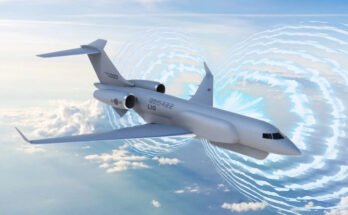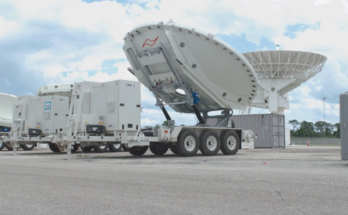By Richard Sterk, Defense Electronics Analyst, Forecast International.
Until somewhat recently, space was a peaceful domain where orbital and flying craft were unprotected, but adversaries are now developing systems to counter advantages. Traffic is building in space, as many new entrants have joined the ranks of spacefaring nations and counter‑space capabilities are becoming more of a concern. The United States must adapt its satellite constellations in response to such growing threats and elevate its game in space situational awareness.
The U.S. Air Force-led Space Situational Awareness (SSA) Systems program (formerly known as SPADATS) tracks and logs satellites and various orbital space debris. (Due to the amount of space junk in orbit – old satellites, spent rocket stages, etc., the orbits of the various pieces of debris must be taken into consideration prior to any space launch.) As an umbrella effort, this program has hosted a number of surveillance programs and projects that have been absorbed and discarded over the years. One such program is the SPACETRACK effort. The reborn SPACETRACK/SSA Systems program is virtually the heart and soul of the overall SSA Systems program.
Current efforts are focusing on the Space Situational Awareness command and control data fusion testbed, as well as the Space Fence project. Space Fence aims to develop a system of ground-based sensors to replace the U.S. Air Force’s old Space Surveillance System very high-frequency radar, which has been operational since 1961. By using higher radio frequencies in conjunction with radar transmitters and receivers collocated at sites dispersed worldwide, the Space Fence will provide timely detection of smaller orbiting objects, primarily those in low-Earth orbit. As a result, it will expand the detection and tracking capacity of the SSA effort by an order of magnitude from 10,000 to 100,000 objects while working in conjunction with other networks. Space Fence is scheduled to reach Initial Operational Capability by the end of 2018.
FI’s eight Electronic Systems Market Intelligence Services cover the full range of defense-related systems and programs in the radar, communications, electro-optical, and electronic warfare markets, presenting a comprehensive market outlook for current equipment as well as new systems being developed as the modern battlefield moves toward a technology-based warfare approach with network-centric capabilities.
For 50 years, Forecast International intelligence reports have been the aerospace and defense industry standard for accurate research, analysis, and projections. Our experienced analysts compile, evaluate, and present accurate data for decision makers. FI's market research reports offer concise analysis of individual programs and identify market opportunities. Each report includes a program overview, detailed statistics, recent developments and a competitive analysis, culminating in production forecasts spanning 10 or 15 years. Let our market intelligence reports be a key part of reducing uncertainties and mastering your specific market and its growth potential. Find out more at www.forecastinternational.com




